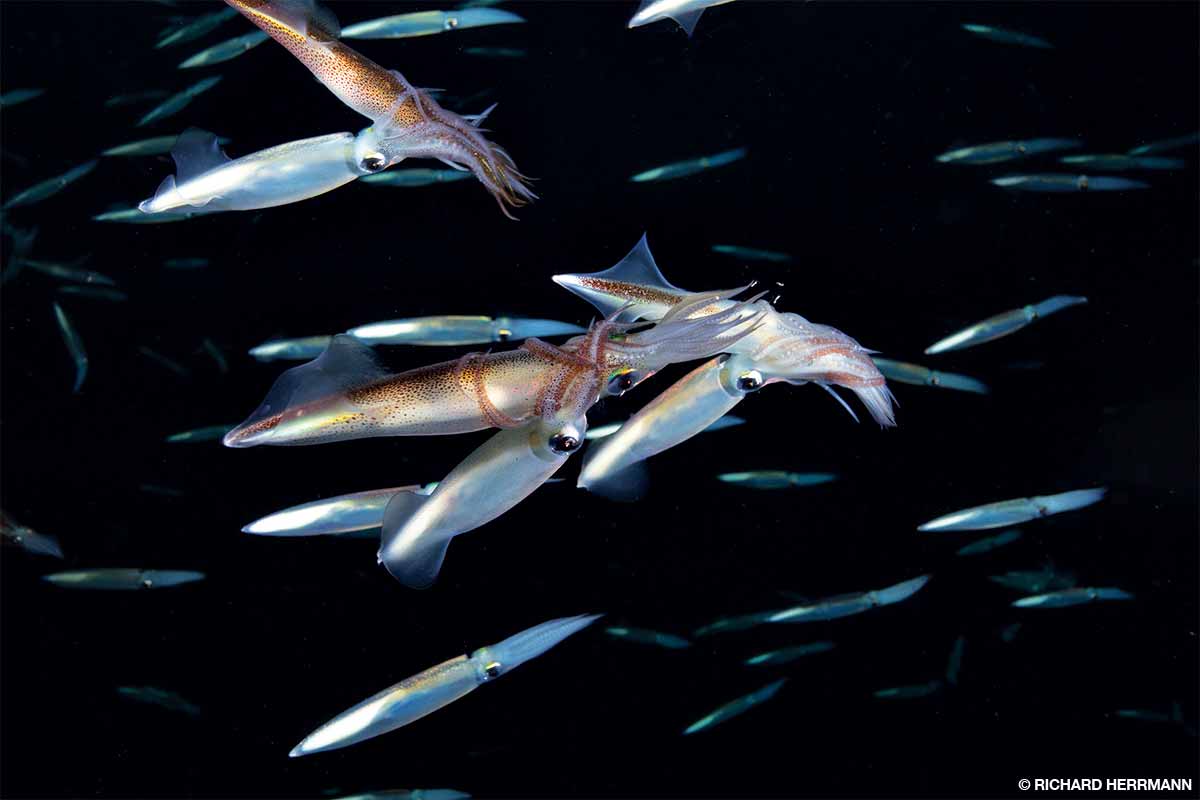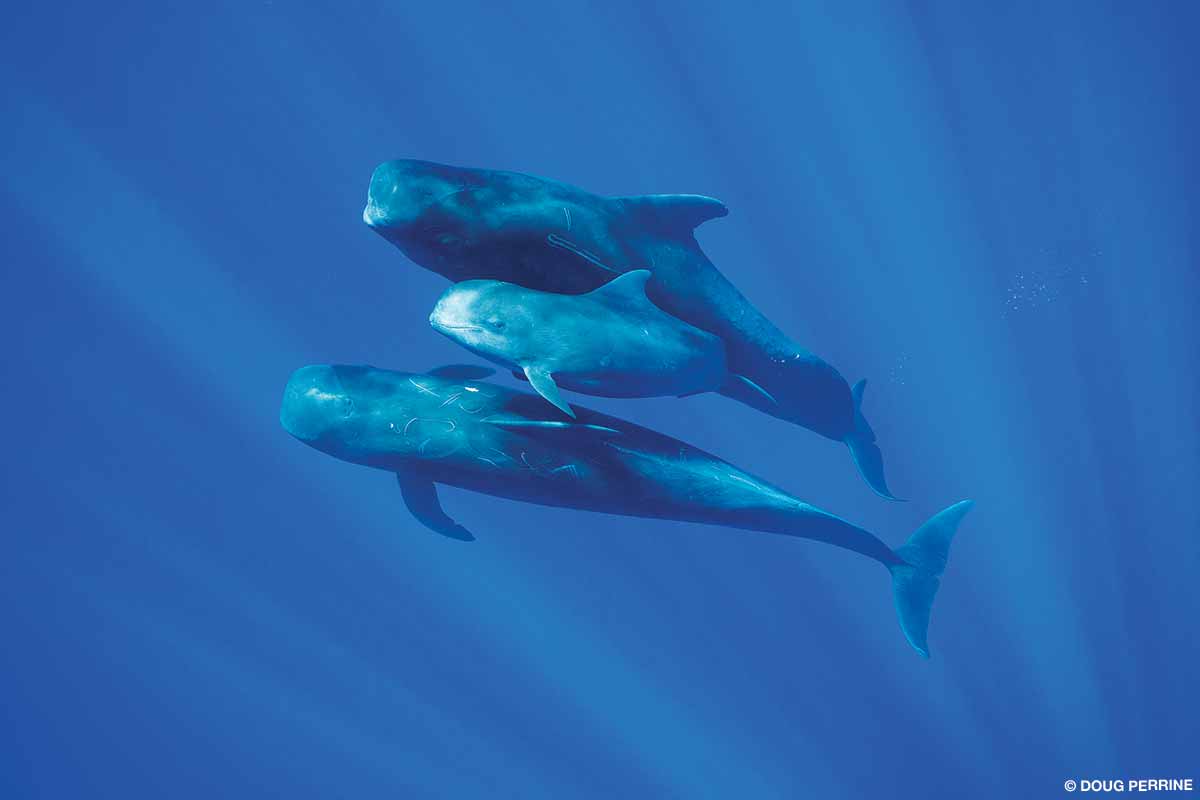As you drop into water as black as night, thousands of pulsating squid in search of mates suddenly surround you. Mating activity is everywhere as multiple males attack single females. The excited squids’ chromatophores (pigment cells) flash colors reminiscent of a Las Vegas neon sign and put you in the middle of a living, moving light show. The action is so frenetic that animals are in your gear and bounce off every inch of your body.
Where we encounter marine megafauna, we see only a tiny slice of their habitats and lives, which rarely includes feeding. These animals may travel thousands of feet vertically or migrate a few thousand miles horizontally to meet their nutritional needs. Some of them — sperm whales, for example — must do both: descend to depths of up to a mile or more to feast on aggregations of squid and roam across large swaths of the Pacific to avoid depleting their food resources in any one area.
Weighing up to 3,000 pounds, walruses are among the largest pinnipeds. However, walruses and polar bears are threatened because of diminishing sea ice in the Arctic. Learn more about these pinnipeds.
Jellyfish are fascinating creatures with very interesting life cycles. Jellyfish populations throughout the world can teach us a lot about climate change and changing environments. Learn more about jellyfish.
The basking shark is the world’s second-largest fish. They have large gaping mouths which are used to skim the plankton-rich surface of the water. Basking sharks are slow and populations have been declining.
Krill are a critical food source for a host of animals, including birds, whales, seals, sharks, fish and squid. Like many other marine animals, the blue whale depends largely on krill for survival. Protecting krill populations will promote not only the survival of a huge variety of marine life but also preserve krill sightings.
Striped marlin can swim thousands of miles and are found in vast tropical and subtropical oceans. They feed on fast-moving prey and are highly migratory.
The paper nautilus is a pelagic octopus in the family Argonautidae. Researchers disagree about the number of distinct extant species. Nautiluses can quickly jet-propel themselves through the water, making it difficult to photograph them.
Flying and encircling birds often act as beacons to what underwater predators and creatures could be below. Learn a geographic location’s bird species to gain a better understanding of a locale’s marine life.



